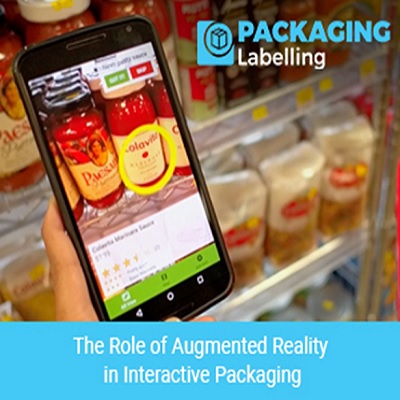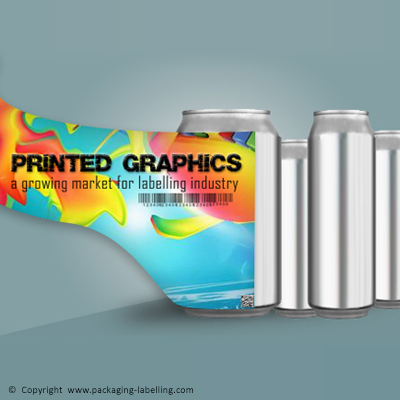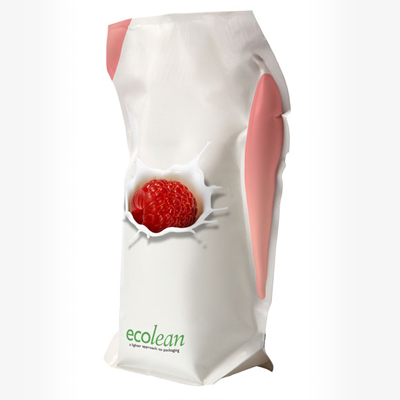The Role of Augmented Reality in Interactive Packaging

Introduction:
Augmented reality (AR) has become a breakthrough technology in recent years, revolutionizing various sectors, including packaging. Augmented reality in interactive packaging offers businesses new ways to engage with customers in captivating and immersive ways. This article discusses the role of augmented reality in interactive packaging, emphasizing its benefits, challenges, limitations, uses, and impact on the consumer experience.
The Concept of Interactive Packaging
Interactive packaging refers to designs that actively engage and captivate consumers, bridging the physical and digital worlds to provide an immersive experience.
Top 10 Benefits of Augmented Reality in Packaging
1. Enhanced Consumer Engagement: Augmented reality adds an extra layer of interactivity to packaging, capturing consumers' attention and creating a memorable brand experience. By leveraging AR technology, packaging can become a platform for storytelling, product demonstrations, and interactive games, increasing consumer engagement and driving brand loyalty.
2. Product Visualization: AR allows consumers to visualize products in a virtual environment, offering a realistic and immersive experience. Through augmented reality, packaging can showcase 3D models, animations, and product details. This enables consumers to explore and interact with the product virtually before making a purchase, enhancing consumer confidence and reducing post-purchase dissatisfaction.
3. Marketing and Branding Opportunities: Augmented reality in packaging provides businesses with new marketing opportunities. Through packaging, brands can use AR to deliver tailored marketing messages, promotions, and personalized content to consumers. This participatory approach fosters a stronger bond between the brand and the consumer, resulting in enhanced brand awareness and increased customer loyalty.
| Also Read: Enhancing B2B Interactions: The Imperative of Embracing Interactive Packaging Experiences |
4. Social Media Integration: Augmented reality in packaging offers opportunities for social media integration, enabling consumers to share their interactive experiences with friends and followers. By incorporating social media sharing buttons or QR codes on packaging, consumers can easily post their augmented reality interactions on platforms like Instagram or Facebook. This user-generated content promotes the brand and creates a ripple effect, reaching a wider audience and sparking interest in the product.
5. Personalization and Customization: Augmented reality allows for personalized and customized experiences tailored to individual consumers. Through AR-enabled packaging, brands can offer personalized recommendations, suggestions, or even virtual customization options based on consumers' preferences and needs. This level of personalization enhances the user experience, leading to increased conversions and repeat purchases.
6. Environmental Sustainability: Augmented reality-powered interactive packaging can help with environmental sustainability efforts by decreasing waste and the carbon footprint associated with packaging materials. Furthermore, interactive packaging can promote environmentally conscious messages, educating consumers about recycling, sustainability programs, or the brand's social commitment.
7. Data Collection and Analytics: Augmented reality in packaging provides valuable data and analytics that help brands gain insights into consumer behavior and preferences. By tracking user interactions, brands can collect data on which features or content within the augmented reality experience resonate with consumers, informing future marketing strategies, product development, and packaging design.
8. Cross-Promotion and Partnerships: AR-enabled packaging opens up opportunities for cross-promotion and partnerships between brands. By collaborating with complementary products or services, brands can create interactive packaging experiences that provide added value to consumers. For example, a cosmetic brand could partner with a hair styling tool manufacturer to create an AR experience showcasing both products in action, offering consumers a complete beauty transformation.
9. Accessibility and Inclusivity: Augmented reality in interactive packaging can enhance accessibility and inclusivity for a wide range of consumers. By incorporating features such as audio descriptions, multilingual translations, or text-to-speech capabilities, brands can ensure that the AR experience is accessible to individuals with disabilities or those who speak different languages. This inclusivity demonstrates a brand's commitment to diversity and ensures that no consumer is left behind in the interactive packaging experience.
10. Future Potential: The role of augmented reality in interactive packaging is continuously evolving, with upcoming advancements on the horizon. As technology improves, we can expect more seamless and sophisticated AR experiences integrated into packaging. For instance, haptic feedback or tactile elements could be incorporated into packaging, further enhancing the sensory experience. Additionally, advancements in wearable devices or smart glasses may offer new ways to interact with AR-enabled packaging, expanding consumer engagement possibilities.
Challenges and Limitations
Implementing augmented reality in packaging comes with certain challenges and limitations that businesses should consider:
1. Cost: Developing and integrating augmented reality technology into packaging can involve significant costs, including software development, app creation, and hardware requirements. Brands need to assess the cost-benefit ratio and ensure that the investment aligns with their marketing objectives and target audience.
2. Technological Requirements: Augmented reality relies on technological infrastructure such as smartphones, tablets, or wearable devices. Brands must consider the compatibility of their augmented reality experiences with various devices and operating systems to ensure accessibility for a wide range of users.
3. User-Friendly Interfaces: To provide a seamless and enjoyable augmented reality experience, packaging designs must incorporate user-friendly interfaces. Complex or unintuitive interfaces may deter users and diminish the overall impact of augmented reality in engaging consumers.
4. Development and Integration: Creating augmented reality experiences requires expertise in software development and design. Brands may need to collaborate with technology partners or invest in training their teams to develop, implement, and maintain augmented reality features in packaging effectively.
5. Adoption and User Familiarity: While augmented reality is becoming increasingly popular, some consumers may still be unfamiliar with the technology or hesitant to engage with it. Brands should consider educating consumers about how to use augmented reality features in packaging to increase adoption rates.
6. Connectivity and Network Reliability: Augmented reality experiences often rely on internet connectivity and real-time data processing. Brands need to ensure that users can access the required content smoothly and reliably, considering potential limitations in areas with poor internet connectivity.
7. User Experience Testing: Augmented reality experiences need to be thoroughly tested to ensure they deliver a seamless and glitch-free user experience. Brands should invest time and resources in user testing and feedback collection to identify and address any issues or challenges that users may encounter.
By acknowledging and addressing these challenges and limitations, businesses can better navigate the implementation of augmented reality in packaging and create successful interactive experiences that captivate and engage consumers effectively.
Applications of Augmented Reality in Interactive Packaging
- Product Information and Instructions: Augmented reality can provide consumers with real-time information, instructions, and tutorials related to the product. By simply scanning the packaging with a mobile device, consumers can access information such as ingredients, usage instructions, nutritional facts, and safety guidelines, enhancing the overall user experience.
- Gamification: Augmented reality-infused packaging can transform monotonous tasks into entertaining experiences. AR allows brands to include interactive games, riddles, and challenges in their packaging, turning it into a source of entertainment. Gamification engages customers and motivates them to share their experiences on social media channels, generating buzz and organic brand promotion.
- Virtual Try-On: Augmented reality enables consumers to virtually try on products such as cosmetics, clothing, and accessories through packaging. By scanning the packaging, consumers can visualize themselves wearing the product, experimenting with different colors, styles, and combinations. This feature provides a convenient and interactive shopping experience, eliminating the need for physical trials and increasing purchase confidence.
A few examples of successful implementations of augmented reality in packaging by notable brands:
1. Coca-Cola: Coca-Cola implemented augmented reality in its packaging through its “Share a Coke" campaign. By scanning specially marked bottles with a mobile app, consumers could see virtual animations and interactive experiences. This augmented reality feature allowed consumers to personalize their Coca-Cola experience and share it on social media, generating widespread buzz and increasing brand engagement.
2. IKEA: IKEA launched an augmented reality app called IKEA Place, which enables users to virtually place furniture and home décor items in their own space. By scanning the product catalog or the barcode on the packaging, users can visualize how the furniture would look in their homes before making a purchase. This interactive packaging experience has been successful in driving online sales and reducing the hesitation associated with purchasing furniture without physically seeing it in person.
3. L'Oréal: L'Oréal integrated augmented reality into their packaging to enhance the makeup shopping experience. Through their "Makeup Genius" app, users could scan L'Oréal product packaging or advertisements to virtually try on different makeup looks in real-time. This interactive feature not only engaged consumers but also provided personalized recommendations based on their facial features. It resulted in increased consumer confidence and facilitated the decision-making process.
4. Lego: Lego introduced augmented reality in their packaging through their "Hidden Side" series. The packaging included interactive elements that, when scanned with a mobile app, brought the Lego set to life with animated characters and a haunted virtual world. This gamified experience not only engaged children but also encouraged them to explore the Lego set further and share their experiences with friends and family.
5. PepsiCo: PepsiCo used augmented reality in its packaging to create a unique consumer experience during the Super Bowl. Their limited-edition Pepsi cans featured augmented reality markers that, when scanned, unlocked exclusive content, including behind-the-scenes footage and augmented reality filters. This interactive packaging not only drove consumer engagement but also increased brand awareness and affinity among football fans.
These examples highlight how augmented reality in packaging has been effectively used by brands to engage consumers, drive sales, and create memorable brand experiences. By incorporating interactive elements and virtual experiences through packaging, these brands have successfully captured consumers' attention, increased brand loyalty, and fostered a deeper connection between their products and consumers.
The Impact on Consumer Experience
Augmented reality in interactive packaging significantly enhances the consumer experience by blurring the line between the physical and digital realms. It empowers consumers with information, entertainment, and personalization, making the purchasing experience more enjoyable and meaningful. Furthermore, augmented reality in packaging encourages active participation and co-creation. Consumers become active participants in the brand's narrative, sharing their experiences, opinions, and feedback. This interactive approach fosters brand ownership, loyalty, and advocacy among consumers.
Conclusion
Augmented reality has transformed how brands and consumers connect through packaging. The integration of AR technology improves consumer interaction, product visualization, marketing opportunities, and brand experience. Companies can differentiate themselves in a competitive environment, boost brand loyalty, and leave a lasting impression on consumers by incorporating augmented reality into interactive packaging. AR-infused packaging has the potential to change how customers interact with products and businesses, from increased engagement and product visualization to personalized experiences and social media integration. As technology continues to advance, we can anticipate intriguing and novel ideas in augmented reality and packaging.









